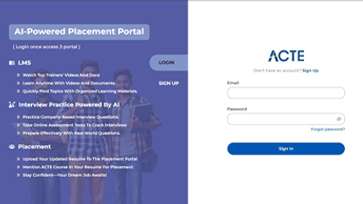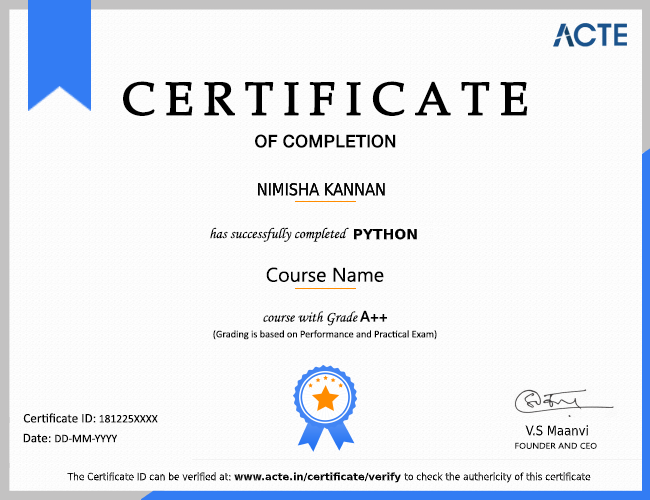The iOS operating system is one of the leading systems for mobile devices and the foundation of Apple's most popular products. This course introduces you to the Apple SDK and the Swift programming language used to develop iOS applications for iPhone, Apple Watch and Apple TV devices. You'll also learn Xcode, the iOS Integrated Development Environment (IDE), and explore user interface kits and multi-touch event handling.Enroll Now with Us ACTE iOS Classroom & Online Training Course.
Become an iOS Developer in 2020: The 3 Pillars to Jumpstart your Career. More and more companies are relying on mobile apps, so iOS developers are in high demand. Becoming an iOS developer takes some effort though, and the talent shortage keeps driving salaries higher and higher, even for entry-level positions
Yes, iOS developers are in demand. But the basic rule is demand and supply, and now days market is over loaded with iOS developers. It's always good if some one can work on every part of a software system. You should be able to write back-end as well for your mobile(iOS) apps.
- Buy a Mac (and iPhone — if you don’t have one)
- Install Xcode.
- Learn basics of programming (probably the hardest point).
- Create a few different apps from step-by-step tutorials.
- Start working on your own, custom app.
- In the meantime, learn as much as you can about software development generally.
- Finish your app.
- Publish your app to the App Store.
- Upload your app to GitHub.
- Contact the company you want to work in!
We are happy and proud to say that we have strong relationship with over 700+ small, mid-sized and MNCs. Many of these companies have openings for IOS analyst. Moreover, we have a very active placement cell that provides 100% placement assistance to our students. The cell also contributes by training students in mock interviews and discussions even after the course completion.
- Education (if degree obtained or important classes taken)
- Work experience.
- Open source (provide links)
- Your apps (provide links if possible)
- Most relevant technical skills (keep it minimal)
- Anything else noteworthy (clubs you were in, developer meetup you founded, hackathon you won)
Let's first talk about what skills you need to build your own apps. Master Xcode: Xcode is the Mac app you use to create apps. Swift Programming: Swift is the powerful programming language that you use to code iOS, macOS, tvOS and watchOS apps. Build UIs: Every app needs a User Interface (UI).
Yes you can learn Swift and iOS Development without any prior coding experience. Swift has been designed by some of the brightest minds at Apple and they have made sure that the language is easy to learn even by absolute beginners.
Our courseware is designed to give a hands-on approach to the students in IOS. The course is made up of theoretical classes that teach the basics of each module followed by high-intensity practical sessions reflecting the current challenges and needs of the industry that will demand the students’ time and commitment.
Our course runs full-time for 12 weeks, but iOS development can take way longer to learn for a few reasons: First iOS basics are just super hard to get comfortable with on your own—mostly because Objective C is a difficult language in a lot of different ways (it looks pretty funky compared to other languages).
Some things are just very difficult and hard to learn because mobile development is a very difficult area of software engineering.But on the other hand users expect apps to be very fancy and powerful. So it is indeed very hard to become an iOS developer – and even harder if you don't have enough of passion for it.
- You'll be working with a technology you are passionate about.
- You're likely to make more money on iOS.
- iOS developer tools are more sophisticated.
- iOS is considered easier for beginners.
- There'll be less updates to make.
How to become an iOS developer
As more companies adopt a mobile-first approach, iOS developers who build apps for Apple devices are in high demand, with talent shortages leading to large salaries for many of those in the field. Developers who know the necessary programming languages and other skills can create apps that enterprises and consumers use every day to make their lives more productive.
To help those interested in the field better understand how to break into a career in mobile development, we compiled the most important details and resources. This guide on how to become an iOS developer will be updated on a regular basis. It is also available as a download.
What does an iOS developer do?
- An iOS developer builds, tests, and refines applications for mobile devices that use Apple's iOS operating system that are consistent with the goals and standards of their company or client.
- They need to have a strong understanding of iOS and how it works with different Apple devices such as the iPhone, iPad, Apple Watch, and Apple TV, and be able to adapt their applications to their firm's or client's requirements.
Why is there increased demand for iOS developers?
While Android holds more of a global market share, Apple now has 1.4 billion active devices--all of which run on iOS, therefore, demand for iOS developers who can create apps for these devices that are sold in the Apple App Store has exploded in recent years. The App Store is predicted to reach 5 million apps by 2020, according to a Sensor Tower report.
What are the best programming languages to learn?
- iOS developers most commonly program in Swift and Objective-C.
- Swift is a general-purpose compiled coding language released by Apple in 2014. It offers better type safety, security, and performance than Objective-C, according to ACTE. Swift is used for developing for iOS, macOS, watchOS, tvOS, and Linux. Apps built with Swift can be run on iOS devices dating back to iOS 7 or later, and OS X devices dating back to OS X 10.9 or later.
- Bohon also noted that Swift is interoperable with Objective-C, which is a general-purpose, object-oriented programming (OOP) language based on C that added OOP paradigms to the language through object messaging. Objective-C was the main programming language used by Apple for iOS before Swift was introduced. Since it has been around since 1984, Objective-C still represents a significant proportion of Apple's code base.
- At WWDC 2019 in June, Apple announced a new framework for its Swift programming language: SwiftUI. SwiftUI is built in Swift, for Swift, and makes code easier to write and understand. It is designed to help developers build better apps with far less code, and will be available in fall 2019, executives said.
What other skills are required to become an iOS developer?
Besides learning Swift and Objective-C, people who want to become iOS developers should learn the following skills, according to Udacity.
- Spatial reasoning: Successful iOS developers must be able to think in 3D and visualize the spatial relations between objects when designing apps for users; this means understanding the types of controls and inputs that are available for the different platforms, as well as who your users are.
- Design guidelines: iOS apps must be intuitive for users and adhere to strict design guidelines. Developers need to learn how to create Model-View-Controller (MVC), delegate patterns, and notifications.
- Networking: Just about every app interacts with the internet in some way; therefore, iOS developers must know how to send and receive data from the network, which is done through JavaScript Object Notation (JSON).
- Core Data: This is the framework for storing data on Apple devices--an important part of almost any app.
- Grand Central Dispatch (GCD):This is what allows developers to add concurrency to apps, making it possible to run multiple tasks at the same time without slowing down performance.
- Git and GitHub: The platforms Git and GitHub help with version control for longer projects and team projects.
Upwork also recommends that iOS developers learn Apple's Xcode IDE, frameworks and APIs like Foundation, UIKit, and CocoaTouch, UI and UX design, Apple Human Interface Guidelines, 2D and 3D graphics frameworks like SpriteKit and SceneKit, OpenGL or Metal, and iOS graphics APIs.






























